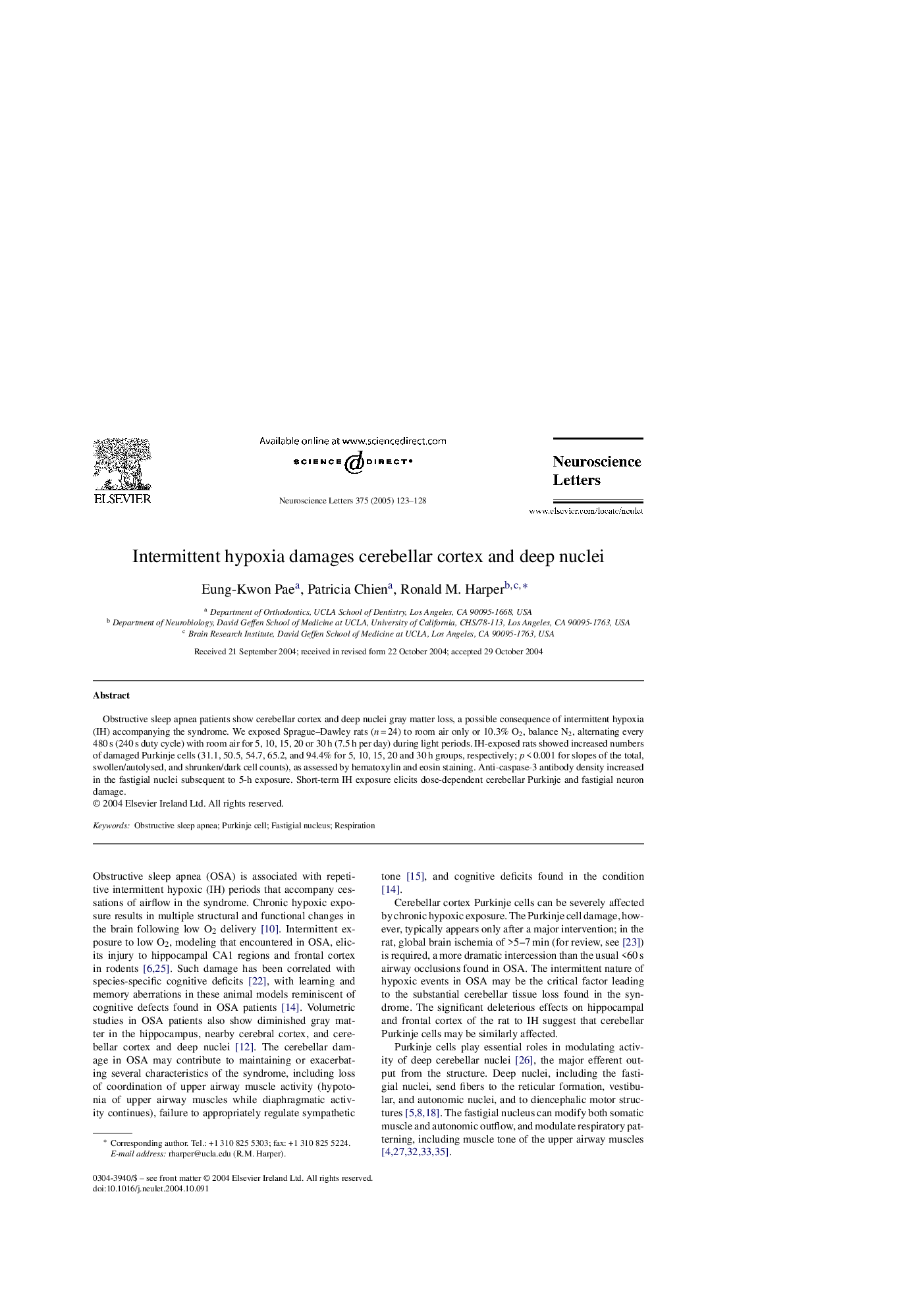| Article ID | Journal | Published Year | Pages | File Type |
|---|---|---|---|---|
| 9429494 | Neuroscience Letters | 2005 | 6 Pages |
Abstract
Obstructive sleep apnea patients show cerebellar cortex and deep nuclei gray matter loss, a possible consequence of intermittent hypoxia (IH) accompanying the syndrome. We exposed Sprague-Dawley rats (n = 24) to room air only or 10.3% O2, balance N2, alternating every 480 s (240 s duty cycle) with room air for 5, 10, 15, 20 or 30 h (7.5 h per day) during light periods. IH-exposed rats showed increased numbers of damaged Purkinje cells (31.1, 50.5, 54.7, 65.2, and 94.4% for 5, 10, 15, 20 and 30 h groups, respectively; p < 0.001 for slopes of the total, swollen/autolysed, and shrunken/dark cell counts), as assessed by hematoxylin and eosin staining. Anti-caspase-3 antibody density increased in the fastigial nuclei subsequent to 5-h exposure. Short-term IH exposure elicits dose-dependent cerebellar Purkinje and fastigial neuron damage.
Related Topics
Life Sciences
Neuroscience
Neuroscience (General)
Authors
Eung-Kwon Pae, Patricia Chien, Ronald M. Harper,
